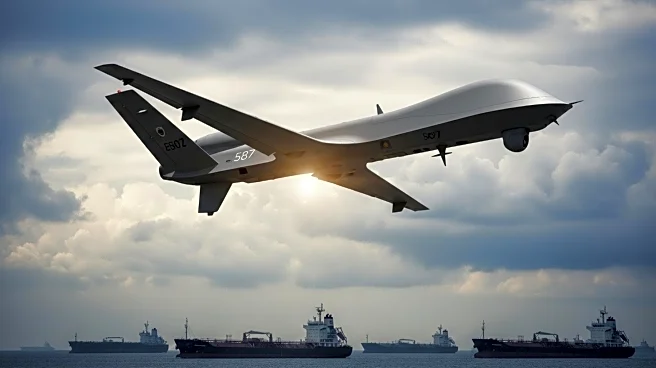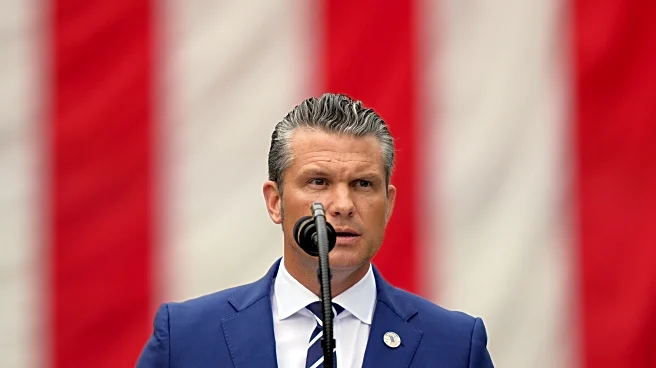What is the story about?
What's Happening?
The Pentagon has announced a significant change in the leadership structure of the U.S. Air Forces in Europe-Air Forces Africa, with the appointment of Lt. Gen. Jason Hinds as the new commander. Unlike previous commanders since the late 1950s, Hinds will not receive a promotion to four-star general, marking a departure from longstanding tradition. This decision aligns with Defense Secretary Pete Hegseth's directive to reduce the number of general officers across the military. The directive calls for a minimum 20% reduction in four-star generals and admirals in active components, as well as a similar reduction in the National Guard. The move is part of a broader effort to streamline military leadership and enhance operational effectiveness by removing redundant force structures.
Why It's Important?
This change in leadership rank reflects a strategic shift in the Pentagon's approach to military command structures, aiming to optimize leadership efficiency and reduce bureaucratic layers. By downgrading the rank of the Air Forces-Europe commander, the Pentagon seeks to cultivate senior leaders who can drive innovation and operational excellence without being hindered by excessive hierarchy. The decision may have implications for U.S. military presence and strategy in Europe, especially in light of President Trump's skepticism towards U.S. involvement in the region and his previous actions to reduce troop levels in Germany. The move could also influence NATO dynamics, as the commander of USAFE plays a crucial role in overseeing U.S. airpower in Europe and Africa and serves as head of NATO Allied Air Command.
What's Next?
The Pentagon's decision to downgrade the rank of the Air Forces-Europe commander may prompt further evaluations of military leadership structures across other commands. As the administration reviews force levels worldwide, there could be additional changes in command ranks and troop deployments, particularly in regions with heightened geopolitical tensions. Stakeholders, including NATO allies and U.S. lawmakers, may react to these changes, potentially influencing future defense policies and international military collaborations. The broader impact on U.S. military strategy and its role in global security remains to be seen.
Beyond the Headlines
The decision to reduce the rank of the Air Forces-Europe commander may signal a shift in U.S. military priorities, emphasizing efficiency and adaptability over traditional hierarchical structures. This approach could lead to long-term changes in how military leadership is developed and deployed, potentially affecting the career trajectories of senior officers. Additionally, the move may reflect broader trends in defense policy, where innovation and operational effectiveness are prioritized to address emerging global threats.
AI Generated Content
Do you find this article useful?















